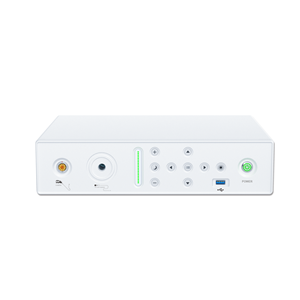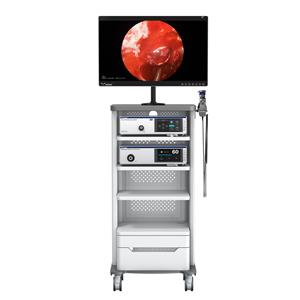What is the difference between hysteroscopy and laparoscopy?
When it comes to laparoscopy, one may think of hysteroscopy, which is a common gynecological diagnosis and treatment technique, which can be used to treat infertility and bring the gospel of new life to women who have been infertile for many years. So what is the difference between hysteroscopy and laparoscopy?
Hysteroscopy can be used to diagnose, treat and follow up lesions in the uterine cavity. Simple hysteroscopic surgery has no wounds. An instrument with a miniature camera is used to enter the uterine cavity through the vagina through the cervix to directly observe the location, size, appearance and scope of the lesions in the uterine cavity. Make careful observation and take material or position curettage under direct vision. The gynecological diseases that can be diagnosed and treated include: endometrial polyps, intrauterine foreign bodies, submucosal uterine fibroids, intrauterine adhesions, uterine septum, infertility, etc., with good curative effect, less pain, and quick recovery.
The scope of application of hysteroscopy: cervical leiomyoma, endometrial stromal sarcoma, endometrial polyps, endometriosis, dysfunctional uterine bleeding disease, uterine fibroids, intrauterine adhesions, uterine mediastinum, Family planning, infertility (tubal unclogging, intervention), etc.
Laparoscopic surgery is an operation performed with laparoscope and related instruments: use a cold light source to provide illumination, insert a laparoscopic lens (3-10mm in diameter) into the abdominal cavity, and use digital camera technology to display the images captured by the laparoscopic lens in real time. on an endoscope monitor. Then the doctor analyzes and judges the patient's condition through the images of different angles of the patient's organs displayed on the monitor screen, and uses special laparoscopic instruments to perform surgery.
Laparoscopic scope of application: hysterectomy, ovarian cystectomy, ectopic pregnancy surgery, acute appendicitis, gallbladder-jejunostomy, hepatobiliary system surgery, spleen and pancreatic disease surgery, gastrointestinal surgery, urinary system disease surgery, salpingostomy, inguinal hernia repair Surgery, pelvic adhesion decomposition, infertility, pelvic adhesion decomposition and salpingoplasty are performed while diagnosing the cause;
In terms of hospital stay, because the hysteroscope does not enter the abdominal cavity, but simply operates in the uterine cavity, the trauma of the patient is far less than that of the laparoscopic surgery. In general, the laparoscopic surgery can perform normal activities 2-4 days after the operation, while Patients undergoing hysteroscopic surgery can move freely in about 1 day without the use of analgesics, and there is no problem of exhausting and urinating.
Laparoscopy and hysteroscopy are different in inspection sites and techniques, and what to do specifically depends on the doctor's advice before surgical treatment.
- NEWS
- BLOG
- Industry News
- Company News




